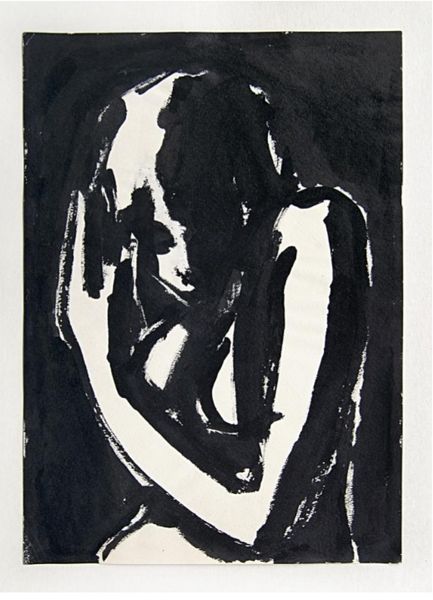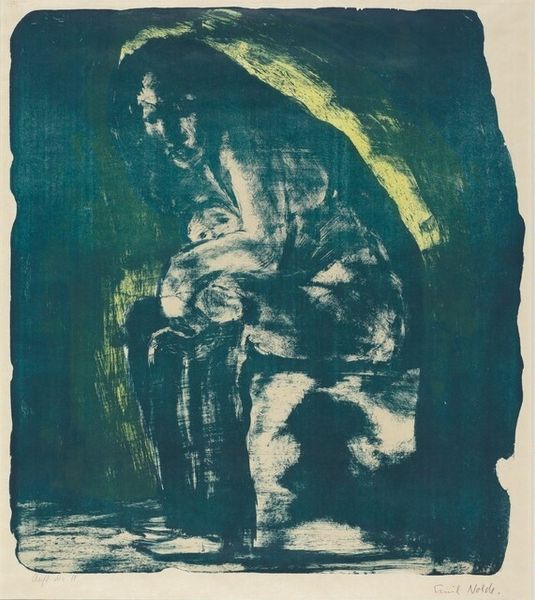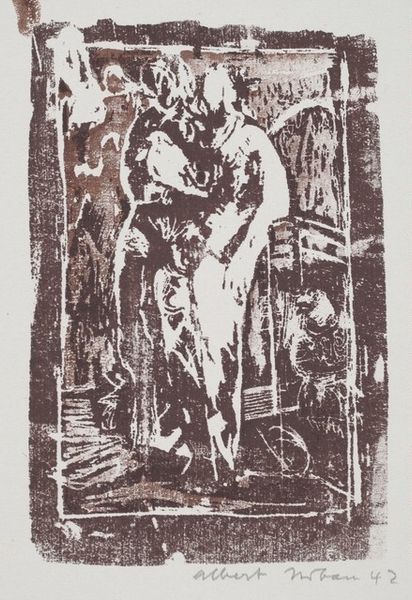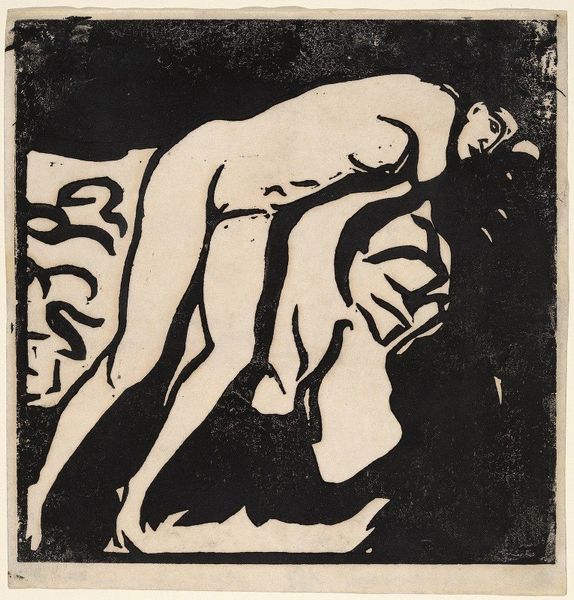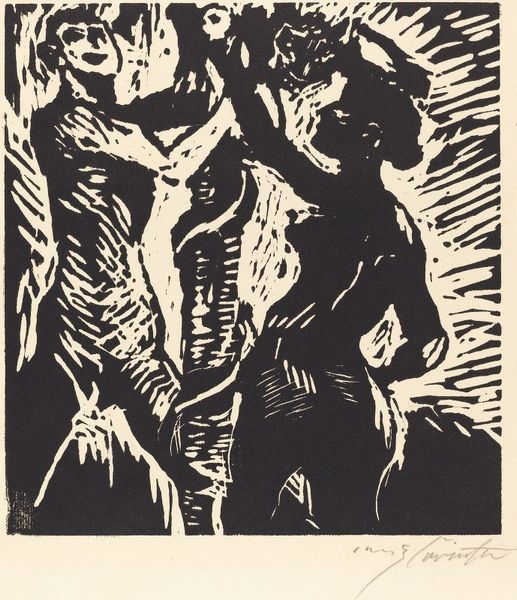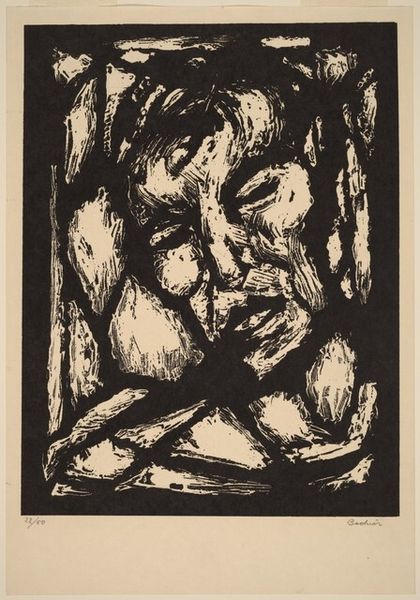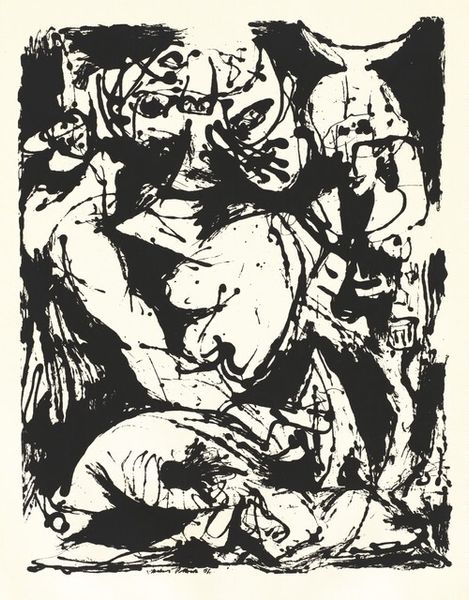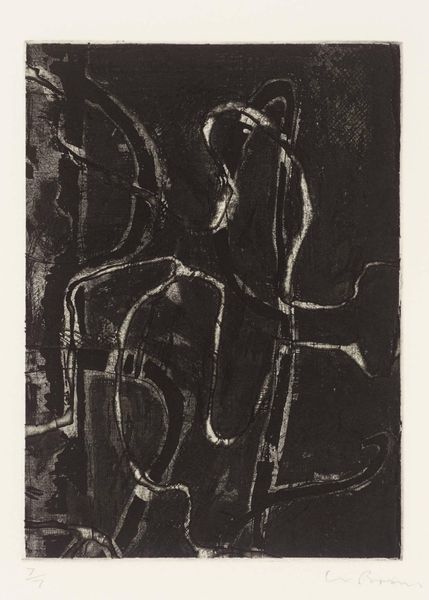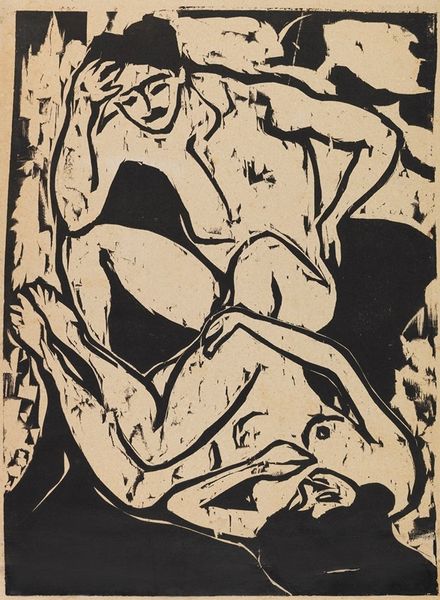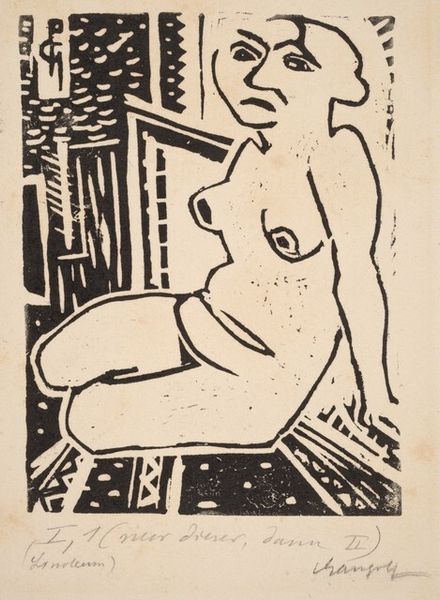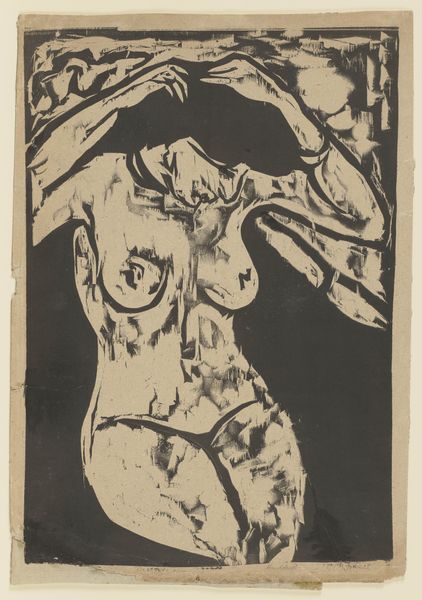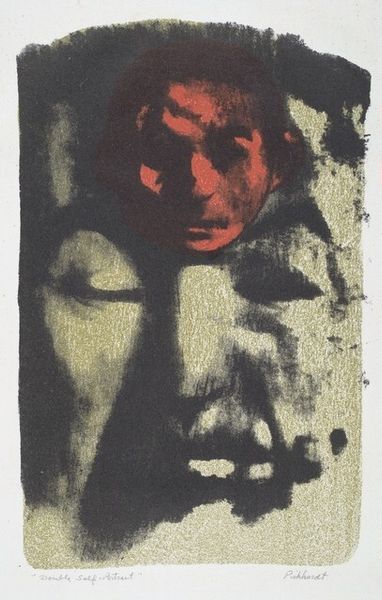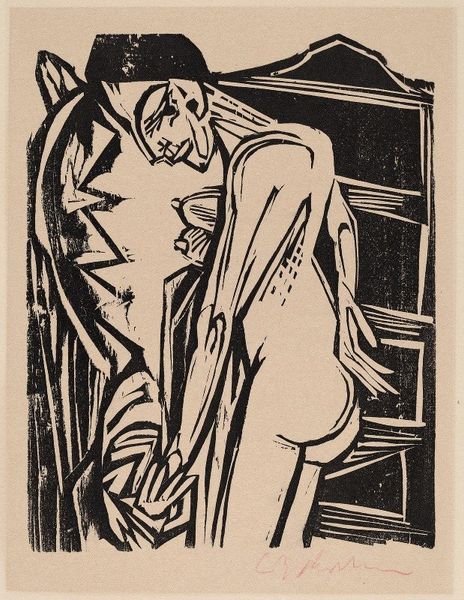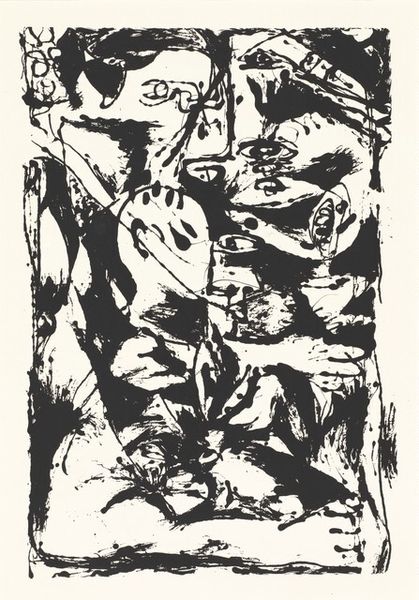
print, linocut, woodcut
# print
#
linocut
#
figuration
#
linocut print
#
expressionism
#
woodcut
#
nude
Dimensions: sheet: 32.5 × 25 cm (12 13/16 × 9 13/16 in.) image: 14 × 8 cm (5 1/2 × 3 1/8 in.)
Copyright: National Gallery of Art: CC0 1.0
Editor: Here we have Paul Gangolf's "Seated Nude," made around 1914, using linocut. The stark contrasts create such a dramatic and unsettling mood. What’s your interpretation of this piece, especially considering the period it was created in? Curator: It's impossible to separate this linocut from its historical context. The raw, almost brutal quality of the print reflects the anxieties and uncertainties that permeated Europe on the eve of World War I. Expressionism, as a style, really thrived by visually articulating internal emotional states and a discomfort with modern societal structures. Do you see the influence of movements like Die Brücke? Editor: Yes, definitely. There’s a primitivism in the way the figure is rendered, and the thick, bold lines, but I’m wondering if that distortion served as a social critique? Curator: Precisely! These artists often used such approaches to challenge academic traditions and bourgeois values. By depicting the human body in a raw, unidealized manner, Gangolf rejects conventional notions of beauty and implicitly criticizes the dehumanizing effects of industrial society. How might this work been perceived within the public art sphere at the time? Editor: It would probably be seen as pretty controversial and even offensive by some! Curator: Indeed. Artworks like this pushed boundaries and questioned existing social and moral norms. The linocut's relatively inexpensive and easily reproducible format also meant that these critiques could be disseminated more widely, potentially reaching audiences beyond the traditional art world. So the medium plays a role too! Editor: That’s fascinating to think about the subversive power of printmaking in that era. Thanks! Curator: And thank you! It's crucial to examine how art reflects and interacts with broader social and political currents, and hopefully we both came to understand how radical some artworks might have been during their time.
Comments
No comments
Be the first to comment and join the conversation on the ultimate creative platform.
